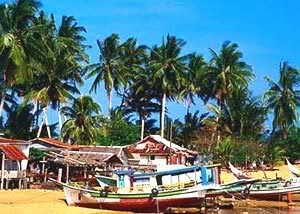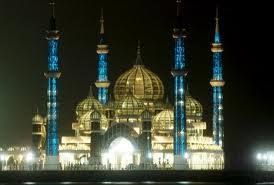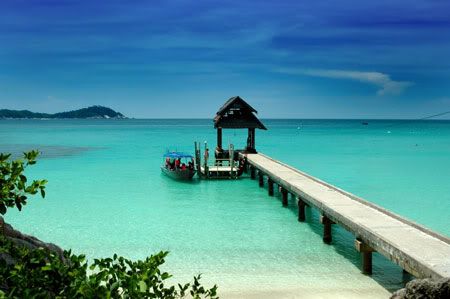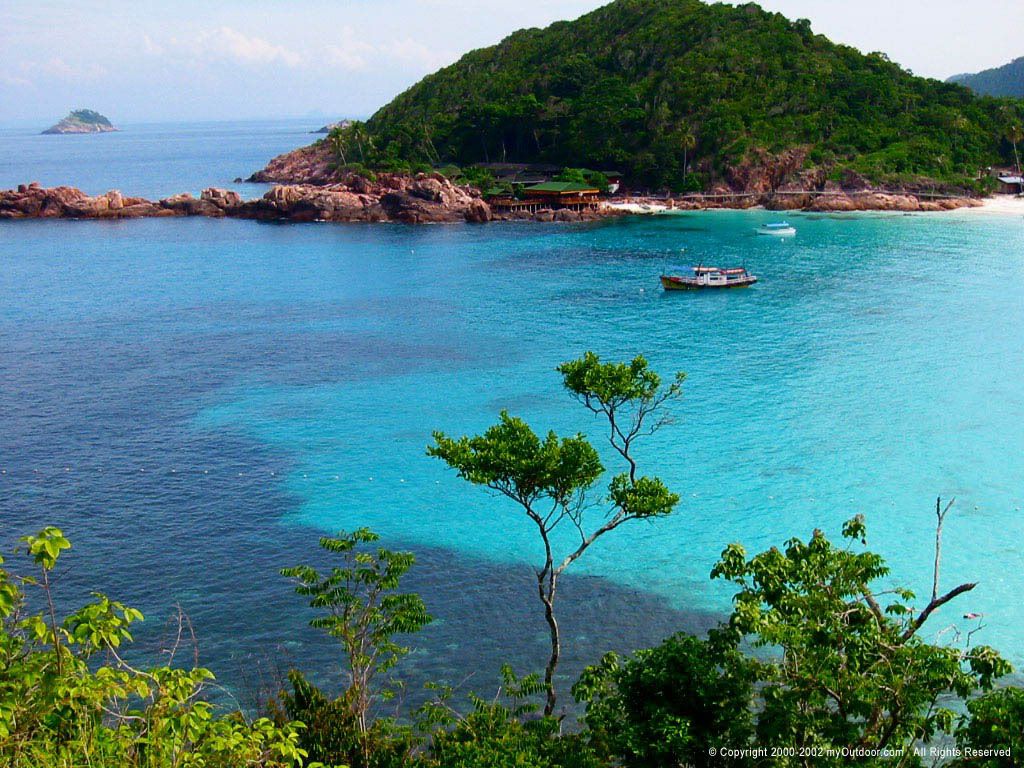Monsoon Cup was first initiated by the Malaysian Prime Minister, Dato Seri Abdullah Ahmad Badawi during his fishing trip in Terengganu. The Prime Minister thought the monsoon season should be used as an advantage to the state and his people rather than being seen as a hurdle. The economic objectives include making the Monsoon Cup a catalyst for development in the state and to create economic opportunities in services and manufacturing sectors related to the event. Among them are hotels, tourism, restaurants, boat-making, food supplies, textiles and souvenirs.
The Monsoon Cup also helped turn the event venue, Pulau Duyong at the mouth of
The Monsoon Cup 2005 celebrated its inauguration and debut as the 50th official event of the Swedish Match Tour (http://www.swedishmatchtour.com/), and serves as the Malaysian leg for the prestigious international sailing event. Dubbed 'The Formula One of Sailing', this professional sailing series was formed in 2000 to unite the world's best match-race regattas under one banner.
The World Match Racing Tour comprises ten events in ten specially selected locations around the world. As the leading professional sailing series in the world, the Tour events are recognized as must-attend regattas on the match-race circuit. The Monsoon Cup for the 2009 offered the second highest prize money in the world (RM1 million) for a match racing event.
The Monsoon Cup 2009 was held at Pulau Duyong, Terengganu, from
The Monsoon Cup is the tenth and final event on the World Match Racing Tour 2009. Twelve of the best match racing teams met on the waters off Terengganu in
This sailing event has ignited interest in match racing and yachting in
The Monsoon Cup's success has helped to create the Korea Match Cup and spurred
ABOUT THE VENUE:PULAU DUYONG

Just next to
At P.Duyung, there are a number of small villages. Evenings are the best time to go as the young children come out to play on the banks. With their kites, they have their inter-village competitions.These kids fight for the reign, to be the 'king of kites'. There is a lot of strategy involved, sneaky tricks and all sorts of espionage going on..
One sneaky way of winning the game is by modifying their kites. The older boys would smash used light bulbs and grind them into fine glass powder. Then they dip the kite string into a glue paste and coat the string with the glass powder. Once up in the air and the string taut, these specially modified kites are used as instruments of destruction. As the kites come together, entwining each other in a tussle, the fine glass is sharp enough to cut through the opponent's kite string - the kite breaks off and floats away as the owner and his group of friends run off to catch the fallen star. The winner keeps the loser's kite and so on it goes.
At Pulau Duyung, traditional boat building is still thriving. Pakcik Haji Abdullah and his group of highly skilled craftsmen have been building these sturdy, seaworthy boats for the Marang fishing fleet for a long, long time now. And amazingly, the boats were built entirely from memory without the use of plans. Not only is he well known in
Now, much of the nearby primary jungle is gone and if there were any cengal trees left, it would be protected and after all, it's too heavy a price to pay for the timber. Yet he continues his work, meticulously putting finishing touches to the beautifully handcrafted vessels, ready to hand them over to the owner where each boat will continue the legacy of Haji Abdullah, Terengganu's finest boatbuilder.
There is a pleasant outfit near Pakcik's place where you can stay for as cheap as RM15 per chalet per night. The set up is basic but its atmosphere, which blends perfectly into the fabric of village life, mesmerise visitors. The owners of the sea facing chalets, believe in the beauty of living with the surrounding, providing the traveller a true feeling of living among the locals. But don't worry if you are unable to find the place, ask anyone on Pulau Duyung and they will be able to direct you to Awi's yellow house. It's best to walk around Pulau Duyung rather than drive. If you get lost, just ask the locals for directions.
Hashim who lives right next to Awi's place makes beautiful wooden models of the old trading ships that used to ply the
These boats are no longer in use except for a few that are used for tourists' cruises in
There is a nice 'palace' in Kota Lama (Old town) built almost entirely of timber. For years, the palace stood derelict, overgrown and forgotten, facing the inevitable doom of erosion exarcebated by the salty sea air. Then one day, it was decided that the palace be rebuilt as it would have been during its glory days. Only the brick and cement foundation is of the original. With the help of historians; local craftsmen got together and reconstructed the timber structures of the palace. Although it is empty inside but the reconstruction gives a good idea to the local architecture of the era. The decorative, perforated wood panels on the top of solid wall panels provide good ventilation and also allows light to seep into the otherwise dark interior. This kind of wood carving involves piercing techniques known as tebuk terus (direct piercing), tebuk separuh (semi piercing) and tebuk timbul(embossed piercing). The wood craftsmen of Terengganu are renown for handcrafting such designs. If you're interested in Malay architecture, the best place to go when in Terengganu is the museum at Losong. The typical architecture of a malay abode entails a porch at the entrance. A balai besar or audience hall became the meeting room where guests and subjects were granted audience. The kitchen, the bedrooms, the wash area, and the dining room have been reconstructed with corridors connecting the rooms. You are required to sign the visitors' book and they don't mind if you leave a donation for the short tour conducted. However, you will not get much out of the tour as the guides speak little English and they hardly know much about the place. But they are extremely helpful in guiding you through the dark rooms and corridors, opening windows for light to come through.




 Malaysian Ringgit Converter
Malaysian Ringgit Converter










0 comments:
Post a Comment